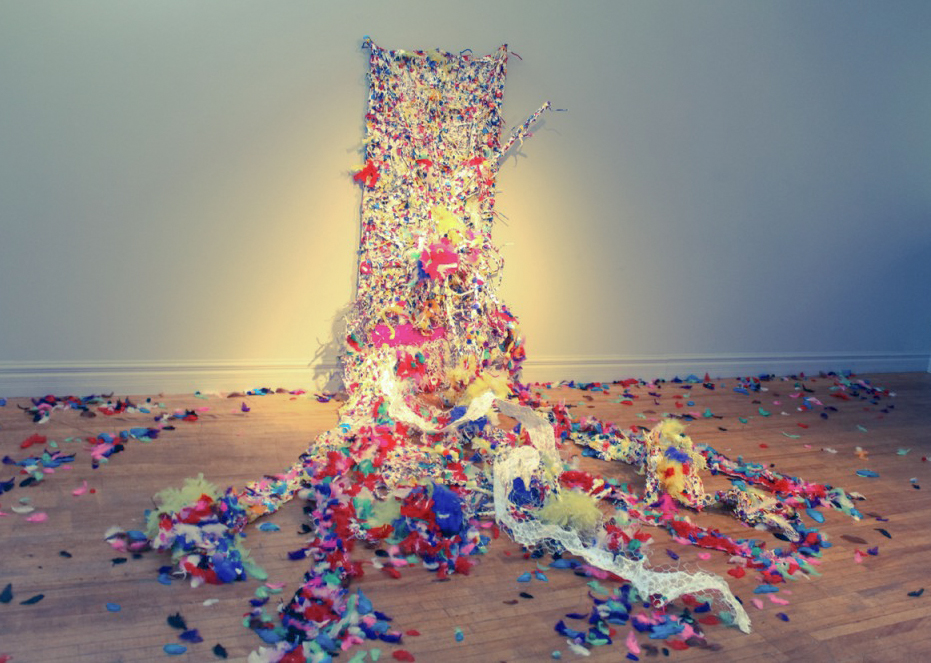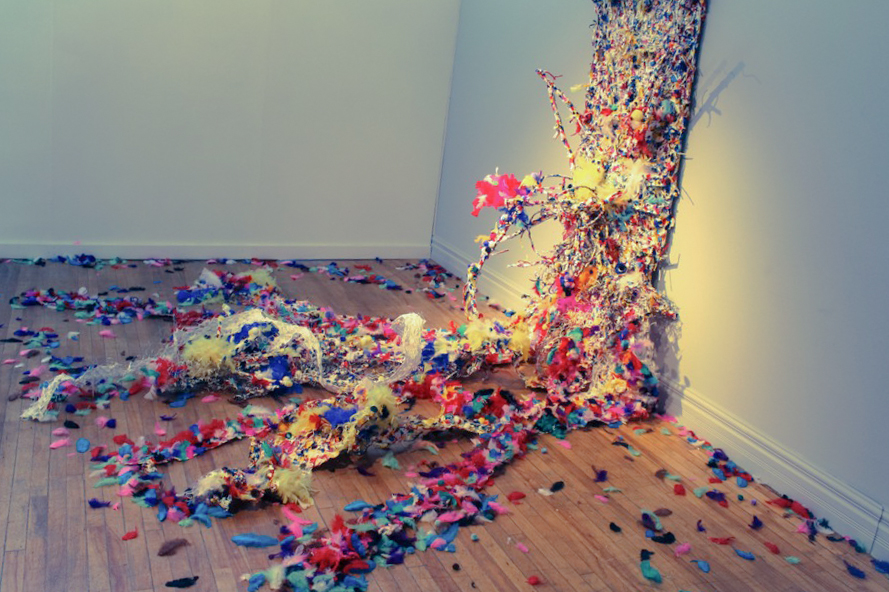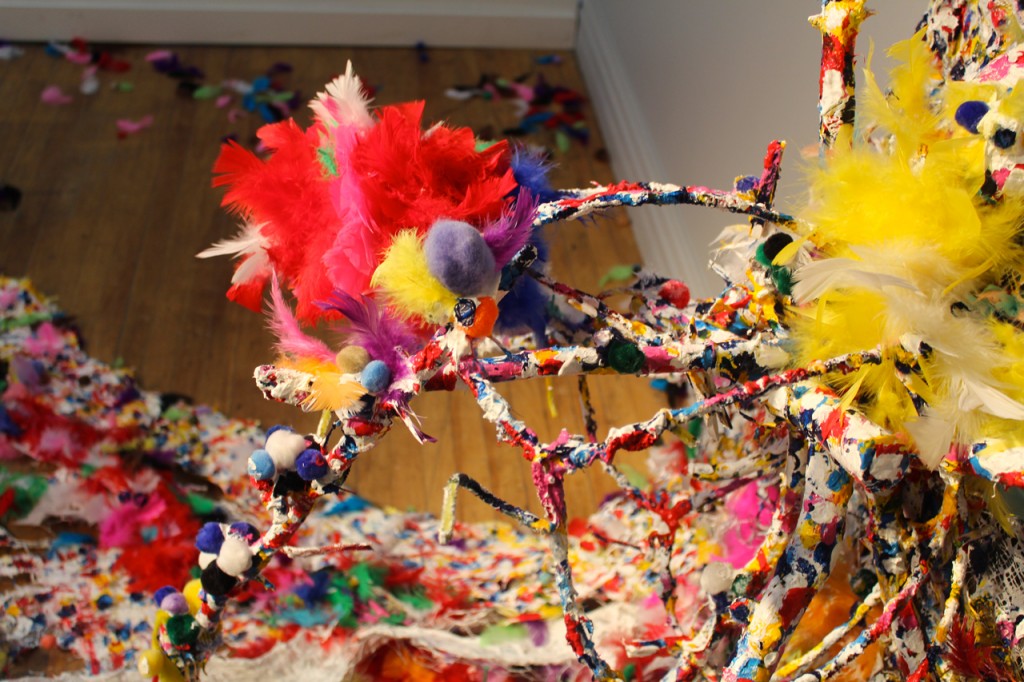Opening : Tuesday September 10, 2013, at 5pm
All that is left unsaid about works of art reveals the limits of many theories on art and creation. As for artists’ comments on their own work or research, as pertinent as they might be, they fall prey to the unpredictable process of all creative endeavours.
Thus, keeping in mind these surely approximate considerations, what could I say about my own process without, of course, lapsing into self-gratification and the mirror’s complacency?
Let’s say, firstly, that like any person devoted to the pursuit of art, that is where the better part of my life is spent. That is to say that I am of my time and space, of my story and its migrations, in my body and my spirit. There, I sense the calm breathing in and out of my discoveries and failures in matter, humble as it may be.
Which brings me to the appropriation of mixed materials: feathers, boas, pompoms, chicken wire, cheesecloth, acrylic paints, pieces of wood, pinecones, thread, coloured pipe cleaners, sheets of paper, cardboard, etc., with an ever-present predilection for vibrant colours (blue, red, and yellow, set in splotches of white). All matter is worked, to breathe form into it, with all aesthetic effect and beyond. It’s as if I might see from the heights of creation.
Let’s go back for a few instants to the question of form. Progenitor of sight, in all creative work, it is form that imparts coherence to the creative process and its resulting works. This same form, exulted at the heart of his process, determines the singularity of the artist’s work. While forever incomplete, form is much more than itself in each creative endeavour that reveals the multiple possibilities of form. So it is that in the creative process, the spectator is increasingly asked to interact with the work, to participate in its creation and to become a “creator” in his own right.
The form my action takes, my “artistic practice”, is necessarily militant, as I’ve always refused every point of order and all ideological verbosity surrounding the creative process. I am, we are, creating, forever in transient phases, profound mutations, and fundamental reconsiderations leading us to a way of thinking necessarily linked to that same liberty we defend when we open wide the floodgates of righteous anger and indignation.
—Pierre Raphaël Pelletier, Embrun 2013


Sponsor

Pierre Raphaël Pelletier
A graduate of the University of Ottawa in philosophy (bachelor's, master's and doctoral studies), Pierre Raphaël Pelletier was notably an art critic, researcher, professor and director of continuing education at his alma mater. Since 1975, he has published around fifteen books (collections of poetry, novels and essays), including the essay Petites incarnations de la tête delinquante (L'Interligne, 1994), Il faut crier l'Injure (Le Nordir, 1998) , novel for which he received the Christine-Dumitriu-Van-Saanen Prize and the 1999 Ottawa-Carleton Book Prize and the collection of poetry Even Ferns Have Skin Cancers (Le Nordir, 2002). His paintings, drawings, sculptures and motley objects have been used to illustrate many books and have been exhibited about fifty times (alone or in groups) mainly in Quebec and Ontario. Intimately linked to his creative work, his activism in favor of the recognition of the arts and culture of French Canada as a formidable interlocutor who occupied all the forums and was in all the fights. His fervor allowed him to occupy the functions of spokesperson and president of major artistic lobbies of the Canadian Francophonie, including a remarkable stint at the Fédération culturelle canadienne-française. In 1997, Pierre Raphaël Pelletier received the Prix du Nouvel-Ontario for his body of work and, in 2003, the Canadian Conference of the Arts awarded him his Diplôme d'honneur, attesting to his exceptional contribution to the cultural life of Canada.
Artist Profile
